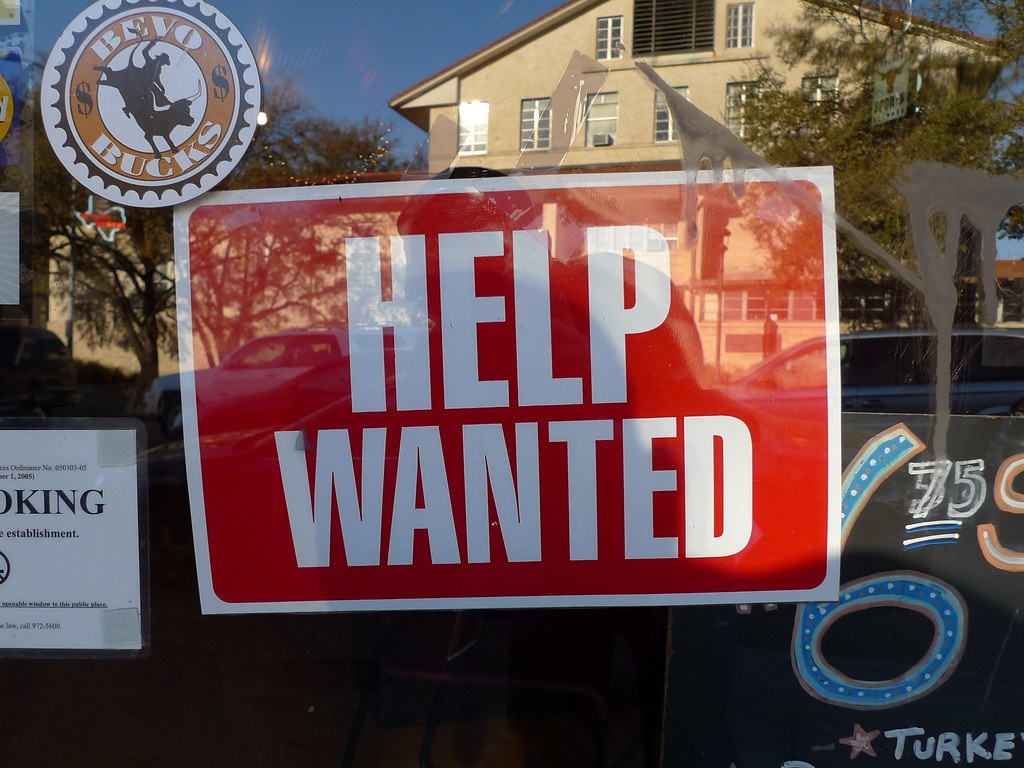There has been much recent hand-wringing over Montana’s labor shortage. Many employers across the state (and the country, and many European countries) are reporting that they can’t find workers to fill vacancies, and I’m sure many readers have seen help wanted signs decorating seemingly every shop and restaurant (here in Bozeman anyway). In response, earlier this month Governor Gianforte ended the state’s participation in the federal program that boosted unemployment insurance by an extra $300 per month. Instead, the state is starting a program that gives bonuses to unemployed workers who return to work.
I’ll get back to these decisions by the governor, but first: are labor shortages even a bad thing? Another way of saying “labor shortage” is “full employment”. Most everyone in the labor force is able to find work, so businesses are in the rare situation of having to compete for workers. Full employment usually arises from a strong economy with strong demand, and indeed the US economy is currently white-hot as COVID infection rates recede and households are eager to spend the savings they built up while spending the last year or so in various stages of self-quarantine.
But full employment also has big social benefits on top of arising from a good economy. When businesses compete for workers, it’s those at the bottom—the ones that otherwise have difficulty finding work—that benefit most. Ex-felons in particular see their chances of landing a job improve significantly, and stable employment is key to reducing criminal recidivism.
Of course, one way that employers compete for workers is by raising wages. Even fast food restaurants have begun to offer starting wages in the neighborhood of $15/hour. Rising wages, particularly at the bottom, obviously help to reduce inequality, which has skyrocketed in the last few decades. Average wages in the US have remained stagnant over this time (adjusted for inflation). There are many reasons for this, but one reason is that we have rarely been at full employment (this is largely by design, owing to the Federal Reserve’s traditional strict inflation targeting policy, but that may be a topic for a future post).
So the scenario where a roaring economy soaks up the entire labor force is one happy reason for labor shortages. But the other possibility is that many people simply choose not to work. This is the theory behind Gianforte’s decision—that many people are happy to collect the enhanced unemployment payments, and its time to send them back to work instead. This could be true in some cases, but states with more generous unemployment benefits have actually seen faster recent job growth, so at a minimum other factors are in play. One is almost certain to be that many people are hesitant to go back to jobs that come with a high risk of COVID infection, particularly in the restaurant and hospitality sectors. The pandemic is not over after all, and still less than half of US adults are fully vaccinated. But as more people get vaccinated and cases continue to fall, we should continue to see more people returning to work. But if the labor shortage persists nonetheless, it is not necessarily bad news.

